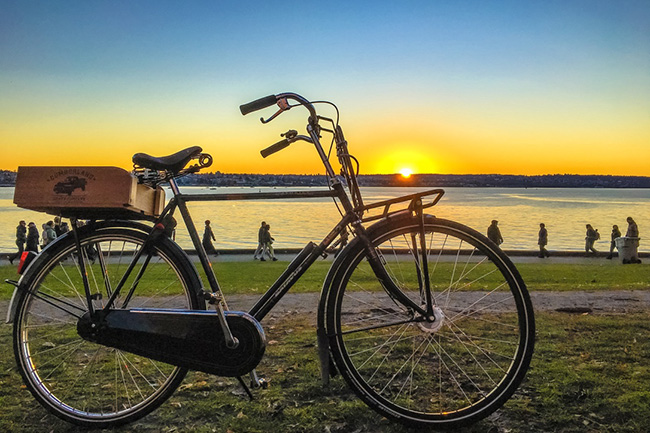
We had the opportunity to cycle in a number of North American cities in 2015, including Washington D.C., Montreal, Philadelphia, and Los Angeles. And it was through the mixed experiences of sharing their streets with locals that we began to observe a seldom-discussed measure of a city’s bike-friendliness: the speed at which its cyclists travel.
In short, the slower the people on bikes were moving, the more mature the bicycle culture, and the better the conditions for cycling. Inversely, in regions that had failed to prioritize two-wheeled travel as a mode of transportation, getting on a bike was still seen as a sport predominately done by males moving long distances at fast speeds. We don’t have anything against the latter, but mass uptake requires a distinct shift from subculture to a more mainstream and normalized approach.
Through our observations and discussions, we were able to determine the average speed of cyclists is generally influenced by four factors: the types of people that were riding bikes, the types of bicycles they were riding, the types of trips they were taking, and finally, the types of infrastructure that particular city was (or wasn’t) building.
Upon arrival in a new city, a cursory glance at the types of people choosing to cycle there will tell you a great deal about its bike-friendliness. The places with the widest variety of ages and abilities can be considered – without exception – the most successful, with a greater number of women, children, and seniors on bikes a surefire sign you’re doing something right. That diversity brings with it a slower-paced, more relaxed environment, that is far more welcoming to the “interested but concerned” crowd.
Furthermore, the types of bicycles those people choose to ride also influenced the speed at which they are travelling. In many emerging bike cultures, we have seen a revitalization of the classic but clunky, utilitarian upright bicycle, complete with racks, fenders, lights, chain guards, bells, skirt guards, and baskets. Public bike-share also goes a long way to make those particular bikes accessible to the casual user, making it effortless to just hop on a bike and go, as easy as stepping out the door and walking to your destination.
Thriving cycling cities are also places where riding a bicycle is seen as walking with wheels, rather than running. We like to think of them as wheeled pedestrians. In those cities, bikes act as an extension of walking and/or public transit, primarily used for short jaunts to the shop, restaurant, or cinema. Without the sweat. As such, cycle-specific clothing and safety gear becomes entirely redundant, and dressing for the destination more commonplace. In turn, cycling becomes more appealing to a broader audience (the 99%, if you will).
Finally, and most importantly, cities with safe, separated space for cycling inspire the user to “slow down and enjoy the ride”. We noticed this phenomenon when pedalling with colleagues through the untamed streets of Philadelphia, and finding ourselves falling behind the pack. We were accustomed to travelling the serene cycle tracks and seawalls of Vancouver, without worrying about keeping up with or holding up motor vehicle traffic. With little-to-no protected bike lanes at their disposal, our Philly friends did not have that luxury. The only car-free spaces afforded to them were a series of off-street trails designed purely for speed and distance, with very few amenities or places they actually want to visit along the way.
Let’s be clear: the first three, more qualitative factors do not come into play without that crucial investment in better bicycle infrastructure. Nearly every time we leave Vancouver, we return home with a newfound appreciation for what we’ve built here, and our ability to ride happily with our children from one side of the city to the other. And so, with the start of a new year, let’s resolve not just to encourage, but to celebrate slow cycling in our cities. It is, after all, the defining characteristic of a street that is both comfortable and delightful for all of its users, regardless of the mode of transportation they happen to choose that day.






